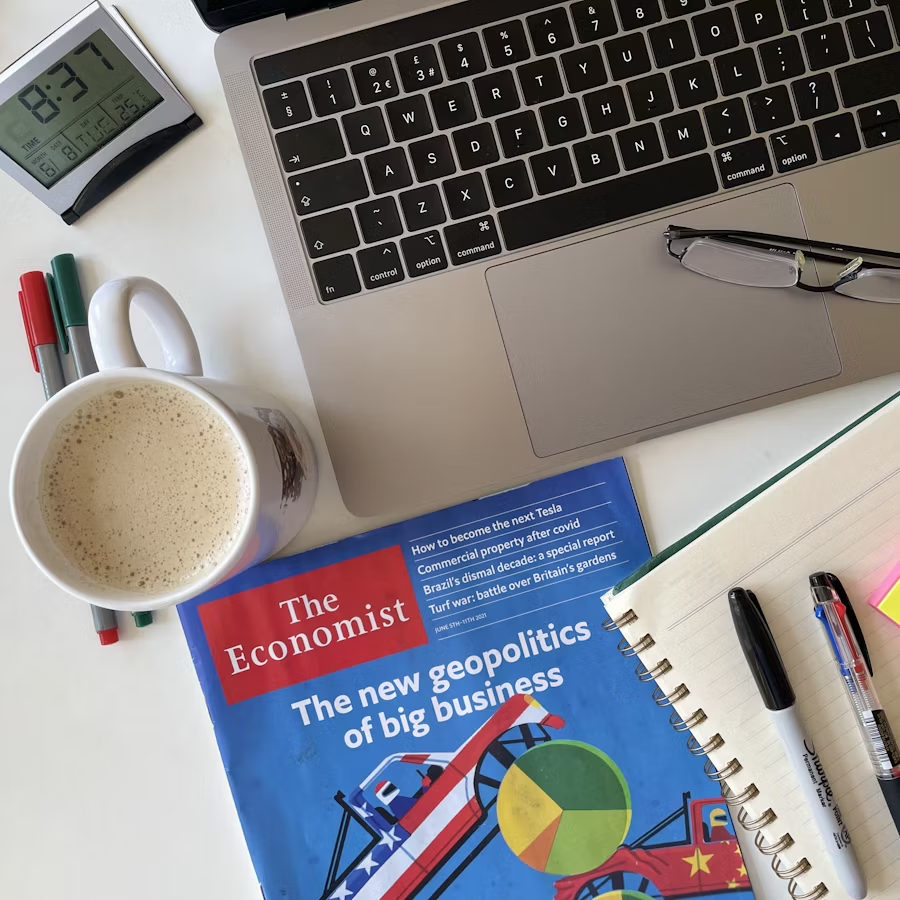
Zurück zum Hub
Blog
Tipps und Schulungen
Planning an Effective QBR: Steps to Boost Customer Satisfaction

Mathieu Co-founder
Veröffentlicht am 15. Juli 2025Aktualisiert am 5. Aug. 2025
Introduction

In an environment where customers are solicited from all sides and expectations for support are higher than ever, companies can no longer afford to be approximate. To create a lasting relationship, it is no longer enough to deliver a product: you have to prove its value, listen actively, and co-build the future with each customer.
This is precisely the role of a QBR (Quarterly Business Review): 👉 review results, 👉 anticipate early warning signs, 👉 and evolve the collaboration into a true strategic partnership.
But for this exercise to become a lever for customer loyalty—and not just another meeting—it must be carefully prepared, conducted with clarity, and above all, focused on the customer's real challenges.
In this article, discover how to plan and facilitate a useful, impactful, and differentiating QBR that will strengthen your customer relationships and open the door to new opportunities.
What is a QBR?
A QBR is a quarterly business review that aims to assess the performance of a business relationship over a given period and define future directions. It is a formal meeting, often structured around presentations, interactive discussions, and data analysis. Typical participants include, on the supplier side: the Customer Success Manager (CSM), the Account Manager, sometimes technical representatives or the founder in early-stage startups. On the customer side: key decision-makers such as the operations manager, IT manager or end users.
The main objectives of a QBR are multiple and interconnected:

Review performance over the past period: This involves a retrospective analysis of key performance metrics (KPIs). For example, in a SaaS context, one might look at software usage rates, the number of incidents resolved, or measurable return on investment (ROI). Tools such as Google Analytics, CRM (Customer Relationship Management), or custom dashboards are often used to support these reviews with concrete data.
Align objectives for the coming quarter: Beyond the review, the QBR is a space to synchronize expectations. The supplier can present product roadmaps, planned updates, or customized recommendations. The customer, for their part, expresses their evolving needs, such as the integration of new features or the adjustment of service levels.
3. Create a space for discussion and co-construction: The collaborative aspect is central. The QBR is not a one-sided presentation; it encourages open dialogue, honest feedback, and the resolution of potential issues. This can lead to contractual adjustments, upsells, or even deeper partnerships.
In short, the QBR transforms a transactional relationship into a strategic partnership, where transparency and mutual value are priorities.
Who is it for?
The QBR is particularly suited to contexts where a customer-supplier relationship requires regular and proactive monitoring.
It excels in B2B environments involving recurring services, such as:
SaaS software: Where customer success is measured by adoption and ongoing satisfaction.
Professional services: Such as consulting, digital marketing, or communications agencies, where quarterly reviews help adjust strategies.
Customer support: In sectors such as finance, healthcare, or education, where milestones are defined and evaluated periodically.
Startups and SMEs: In the early stages, the founder or a senior manager may lead the QBR to build trust and demonstrate personal commitment.
It is not limited to large companies; even freelancers or small businesses can adopt this practice to build customer loyalty. However, it is less relevant in purely transactional relationships, such as one-off purchases without follow-up (e.g., B2C e-commerce).
The roles involved vary depending on the size of the organization:
Customer Success Manager (CSM): Often the conductor, responsible for customer satisfaction and retention.
Account Manager: Focused on account growth, they identify opportunities for expansion.
Founder or executive: In the early stages, their presence adds a personal and strategic touch.
Why does a well-run QBR strengthen customer satisfaction?

In an increasingly competitive business landscape, customer satisfaction is no longer just a performance indicator, but a strategic lever for loyalty and growth. A well-conducted QBR (Quarterly Business Review) plays a pivotal role in this area, transforming transactional interactions into positive and lasting experiences. More than just a meeting, an effective QBR demonstrates a genuine commitment to the customer, strengthening their loyalty and perception of value.
According to recent reports from Gartner and Forrester, by 2025, companies that incorporate structured quarterly reviews will see their Net Promoter Score (NPS) increase by an average of 15 to 25%, as these sessions directly address customers' emotional and practical needs. A well-prepared QBR is not just a review of data; it is an opportunity to build a relationship of trust, where the customer feels valued, listened to, and involved. In this chapter, we will explore in detail how a QBR enhances customer satisfaction through three main areas: demonstrating active listening, valuing results, and cultivating a sense of true partnership.
Show that you are listening
One of the fundamental pillars of customer satisfaction is the feeling of being heard. In a world where customers are bombarded with impersonal communications, a well-conducted QBR provides a space for free expression, potentially transforming latent frustrations into opportunities for improvement.
Active listening mechanisms in a QBR
A good QBR starts with an explicit invitation to dialogue. For example, by allocating a substantial portion of the agenda (often 20-30 minutes) to customer feedback, the supplier signals that the customer's opinions are a priority. This includes not only successes, but also points of friction: frustrations with missing features, ideas for future improvements, or emerging needs dictated by market changes.
This approach reinforces the feeling of being valued, as it goes beyond passive listening. Techniques such as rephrasing feedback (“If I understand correctly, you would like a more seamless integration with your CRM?”) or using collaborative tools (such as Miro to jot down ideas in real time) demonstrate proactive listening. Psychological studies, such as those based on Oliver's customer satisfaction theory (1997, updated for modern B2B contexts), show that when customers perceive genuine listening, their emotional satisfaction levels increase significantly, reducing the risk of churn by 20%.
Concrete examples of listening in action
Let's imagine a SaaS customer who expresses frustration with slow support response times during a QBR. Instead of defending the status quo, the CSM (Customer Success Manager) notes the point, proposes an immediate action plan (such as priority escalation), and follows up with an email.
The result: the customer feels valued, and their satisfaction score rises from 6 to 9 on the NPS scale in the following quarter.
In a marketing services context, a customer might share ideas for innovative campaigns. By incorporating these suggestions into the roadmap presented, the provider shows that the QBR is not a monologue, but a two-way exchange, reinforcing the perception of a personalized relationship.
Long-term benefits
This demonstration of listening is not limited to the meeting itself; it generates a snowball effect. Customers who are listened to are more likely to renew their contracts (retention rate +15% according to HubSpot Research 2025) and recommend the supplier, amplifying satisfaction through word of mouth.
The 3 steps to an effective QBR
Prepare the QBR in advance

Collect the right data
Performance KPIs
User feedback
Issues reported to support
Recent developments at the client company (fundraising, growth, recruitment, etc.)
Structure the agenda
👉 Send it in advance to get the client involved:
“Here are the four points I suggest we cover: performance, feedback, areas for improvement, and the roadmap ahead.”
Set objectives
Example: “Identify the next quick wins to maximize the use of our platform.”
Conduct the QBR methodically
Create a relational framework
Always start with an icebreaker or a personalized question. This helps to relax the atmosphere and shows that it's not just an audit report.
Highlight the key points
Top 3 successes
1 or 2 areas for improvement
Concrete proposals for the future
👉 Use visuals, comparisons, and meaningful data.
“You've saved an average of 11 hours per month thanks to the automation we've implemented.”
Engage the customer
Ask open-ended questions:
“How do you feel about the progress of our collaboration?”
“What else would be useful for your team?”
Follow up on post-QBR actions
A QBR doesn't end with the meeting.
Clear and actionable report
Send a summary of the decisions made
List of actions, responsible parties, deadlines
Regular follow-up
Check-in every 2 weeks
Update in the CRM or shared space
Tip: good follow-up = proof of commitment = increased trust.
Tips for making your QBRs unforgettable
Organizing a QBR is good. But making it a highlight of the customer relationship is what sets mediocre Customer Success or Account Managers apart from strategic partners. An unforgettable QBR leaves a lasting impression, builds trust, and opens the door to opportunities. Here are the key levers to activate to turn your QBRs into memorable experiences
🎯 1. Maximum personalization (beyond first names)
Today's customers expect a tailored approach. To stand out from the crowd, each QBR must be specifically designed for the customer in front of you, with in-depth knowledge of their context:
Mention recent internal projects: “We've seen that you've launched a redesign of your customer journey—here's how our solution can fit in.”
Refer to their news (fundraising, recruitment, growth, crisis): “Following your Series A, we imagine that the sales team will be expanding...”
Adopt their business vocabulary: speak like them. If they talk about “MRR pipeline,” don't talk about “marketing leads.” Immerse yourself in their terminology to
create a reassuring mirror effect.
🎁 Bonus tip: use their logo, graphic charter, or visuals from their environment (website, products, LinkedIn, etc.). This shows that it's not a standardized PDF sent to everyone.
📖 2. Storytelling and education: don't show numbers, tell a story
A QBR should not look like a raw data extract. Your audience needs meaning, not just KPIs. Turn numbers into compelling storytelling:
Instead of saying: “Email open rate: 48%” ➝ Say: “Your emails have a 20% higher open rate than the industry average, reflecting the quality of your sequences and the engagement of your targets.”
Include before/after comparisons: “Before implementation, your team sent 200 emails per week manually. Today, they send 800 with 3x more qualified responses.”
Use visual comparisons and impactful graphics, not a raw Excel table. The brain retains a graphical trend or customer example better than an isolated percentage.
Highlight concrete stories: “One of your SDRs got a meeting with X thanks to the sequence we designed together. This is an excellent entry point for your retail strategy.”
🚀 3. Propose ambitious (and jointly developed) next steps
A successful QBR never ends with a simple “see you soon.” It should open up new perspectives and drive a dynamic for action.
Propose ambitious but realistic scenarios:
“How about we launch a targeted A/B test with your field sales reps to validate this channel?”
“We can integrate a dedicated sequence for IT decision-makers at the start of the new school year.”
Co-design the next steps: leave room for your contacts to react, adapt, and prioritize. This transforms the QBR into a truly shared strategic space.
Set clear, time-bound, and measurable goals, for example: “Q3 goal: reduce the average response time to a lead to less than 48 hours using Emelia automation.”
💡 4. Create value beyond your product
The best QBRs are those that go beyond the strict framework of the software or service being sold. You then become a partner, not just a supplier:
Share highly targeted content: “Here's an article that summarizes best practices in B2B tech lead nurturing—I think your marketing teams might find it interesting.”
Make useful connections: “Looking to structure your sales stack? We can put you in touch with a partner specializing in B2B CRM for scale-ups.”
Provide anonymized (and legal) benchmarks: “Among companies of similar size in your industry, we see an average response rate of 12%. You're at 17%—excellent, but here's where we can still improve.”
🎯 Conclusion

An effective QBR should never be seen as a mere formality or reporting exercise. It is a valuable opportunity to strengthen customer relationships, demonstrate the value you bring, and, above all, lay the groundwork for the next strategic steps.
By combining rigorous preparation, engaging facilitation, and structured follow-up, you show your customers that you are more than just a service provider: you are a partner committed to their success.
Add to that genuine active listening, highly personalized service, and the ability to spark high-impact discussions, and your QBRs will become a real driver of customer loyalty, business expansion, and differentiation in your market.
In short: every QBR is an opportunity to create perceived value. Seize it.

Klare, transparente Preise ohne versteckte Kosten.
Keine Verpflichtung, Preise, die Ihnen helfen, Ihre Akquise zu steigern.
Credits
Können verwendet werden für:
E-Mails finden
KI-Aktion
Nummern finden
E-Mails verifizieren
€19pro Monat
1,000
5,000
10,000
50,000
100,000
1,000 Gefundene E-Mails
1,000 KI-Aktionen
20 Nummern
4,000 Verifizierungen
€19pro Monat
Entdecken Sie andere Artikel, die Sie interessieren könnten!
Alle Artikel ansehenSoftware
Veröffentlicht am 14. Mai 2024
7 Alternativen zu Folderly, um Ihre Zustellbarkeit im Jahr 2025 zu verbessern
 Marie Head Of Sales
Marie Head Of SalesWeiterlesen
Blog
Veröffentlicht am 5. Apr. 2025
FullEnrich: Bewertungen, Preise und Alternativen, um böse Überraschungen zu vermeiden
 Mathieu Co-founder
Mathieu Co-founderWeiterlesen
Software
Veröffentlicht am 31. März 2025
9 Alternativen zu UpLead, um Ihre Kundenakquise WIRKLICH anzukurbeln
 Niels Co-founder
Niels Co-founderWeiterlesen
Software
Veröffentlicht am 11. Juli 2024
8 Alternativen zu Expandi, um Ihre Akquisitionskosten zu senken
 Marie Head Of Sales
Marie Head Of SalesWeiterlesen
Software
Veröffentlicht am 22. Apr. 2024
Die 5 besten Alternativen zu Dropcontact für eine bessere B2B-Kundenakquise
 Marie Head Of Sales
Marie Head Of SalesWeiterlesen
Software
Veröffentlicht am 14. Juli 2024
6 Alternativen zu Skylead, um Kosten zu sparen und Ihre Lead-Generierung zu verbessern
 Marie Head Of Sales
Marie Head Of SalesWeiterlesen
Made with ❤ for Growth Marketers by Growth Marketers
Copyright © 2025 Emelia All Rights Reserved
